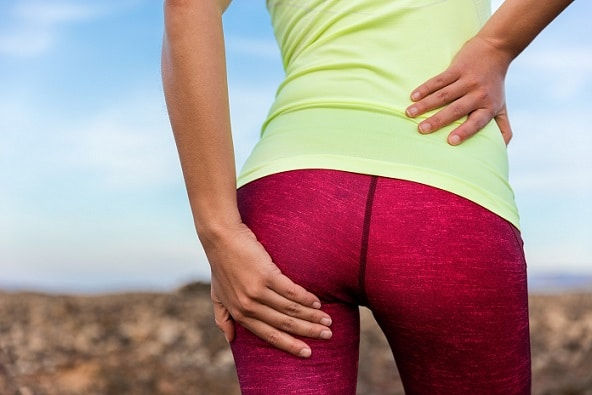Dead Butt Syndrome? Symptoms, Causes and Corrective Exercises
- Yaletown Wellness
- Mar 23, 2023
- 4 min read
Updated: Dec 8, 2023
After working in a chair for hours, have you experienced dead butt syndrome? This is a condition that can cause pain, discomfort, and problems with posture and mobility.
Keep reading this blog to learn more about this syndrome, and discover how you can treat it with some of the exercises that our Kinesiologist recommends.
(These exercises can work as well as a regular Gluteal Workout, to prevent dead butt syndrome and also to make firmer and nicer glutes. 🍑💪 )

Gluteal amnesia, also known as dead butt syndrome, is a condition where the gluteal muscles, which make up the buttocks, stop functioning properly. This can lead to pain in the lower back, hips, and knees, as well as difficulty with movements such as squatting and lunging.
Causes
It is caused by prolonged sitting or inactivity, which can weaken and deactivate the gluteal muscles. This is a common issue for people who work desk jobs or spend a lot of time sitting, such as students or drivers.
When the gluteal muscles become inactive, other muscles in the legs and hips compensate, which can lead to imbalances and overuse injuries. For example, if the hip flexors are overused to compensate for weak gluteal muscles, it can lead to hip flexor strain or lower back pain.
Other factors that can contribute to gluteal amnesia include:
- Lack of exercise: Not exercising the glutes can lead to weakness and decreased activation.
- Poor posture: Poor posture can cause the muscles in the glutes to become stretched and inactive.
- Injury: An injury to the glutes or lower back can cause the muscles to stop functioning properly.
- Age: As we age, our muscles can weaken and lose their tone, which can contribute to gluteal amnesia.
Symptoms
The symptoms of gluteal amnesia can vary from person to person, but some common symptoms include:
Lower back pain: Weak gluteal muscles can cause the lower back muscles to compensate, leading to pain and discomfort.
Hip pain: Weak glutes can also cause pain in the hips, as other muscles may compensate for their lack of function.
Knee pain: The glutes play an important role in stabilizing the knees during movement. If they are not functioning properly, it can lead to knee pain and instability.
Poor posture: Weak glutes can lead to poor posture, which can cause other muscles to become strained and overworked.
Difficulty with exercise: If the glutes are not functioning properly, it can be difficult to perform exercises that require their activation, such as squats, lunges, and deadlifts.
Corrective Exercises
Fortunately, gluteal amnesia is treatable. The first step is to incorporate exercises that specifically target the glutes into your workout routine. Squats, lunges, deadlifts, and glute bridges are all great exercises for strengthening the glutes. It's also important to stretch your hip flexors regularly, as tight hip flexors can inhibit the glutes from firing properly.
Here we share some exercises that our kinesiologist Elisa recommends, so you can try them either at home or at the gym to prevent and alleviate gluteal amnesia.
Kneeling Hip Hinge 3 series of 12

Start on your hands and knees with your wrists directly under your shoulders and your knees directly under your hips.
Keeping your core tight and your back flat, slowly hinge at the hips and push your hips back towards your heels.
Keep your arms straight and your head in line with your spine.
Lower as far as you can while maintaining good form, then push your hips forward to return to the starting position.
Glute Bridge With Yoga Block 3 Series of 12

Lie on your back with your knees bent and your feet flat on the ground.
Place a yoga block between your knees and squeeze it to engage your glutes.
Keeping your core tight, lift your hips off the ground, squeezing your glutes at the top of the movement.
Hold for a few seconds, then slowly lower your hips back down to the ground.
Split Stance Deadlift
3 series of 12 for each side

Stand with your feet shoulder-width apart, with one foot slightly in front of the other.
Hold a dumbbell or kettlebell in one hand.
Keeping your back straight and your core tight, hinge at the hips and lower the weight towards the ground.
Keep your front knee slightly bent and your back leg straight.
Lower as far as you can while maintaining good form, then push your hips forward to return to the starting position.
Repeat for 12 reps, then switch legs and repeat on the other side 12 more times x 3 times.
Goblet Squat With Kettlebell
3 series of 12

Hold a kettlebell by the horns with both hands, with your feet shoulder-width apart.
Keep your core tight and your back straight, lower into a squat, push your hips back, and bend your knees.
Keep your weight in your heels and your chest up.
Lower as far as you can while maintaining good form, then push through your heels to stand back up.
Repeat for 12 reps, focusing on keeping your core tight and your glutes engaged throughout the movement.
Check this video for more details!
Bottomline, dead butt syndrome is treatable,
so keep it up and stay consistent with the exercises.

Commentaires